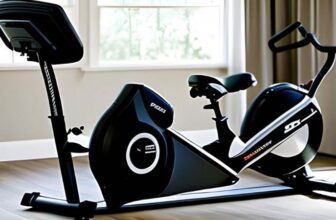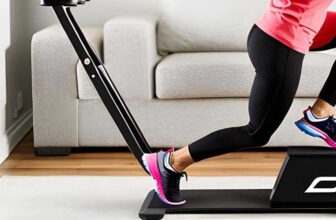
Recumbent bikes have gained popularity in recent years as low-impact exercise option that provides numerous health benefits. Many individuals wonder whether a recumbent bike is effective for weight loss. In this article, we will explore the benefits of using a recumbent bike, the workouts suitable for beginners, whether it works the abs, the effectiveness for weight loss, and the calories burned during a recumbent bike session.
Recumbent Bike Benefits for Weight Loss
Recumbent bikes deliver a combination of advantages for weight loss. Firstly, they supply a cardiovascular exercise which boosts your heart rate or increased heartbeat, assisting you burn more calories comparatively and shed some excess pounds. These bikes are gentle on the bone joints, making them a fruitful option for individuals prey to joint issues or those healing from any severe injury. By involving some large muscle groups of the legs, such as the glutes, hamstrings, and quadriceps, recumbent bikes promote muscle strength and endurance while burning calories.
Furthermore, recumbent bikes offer a comfortable seating position with a backrest and support for the lower back, reducing strain and discomfort during exercise. This allows you to exercise for longer durations and stay motivated on your weight loss journey.
Recumbent Bike Workout for Beginners
If you’re new to recumbent bikes, it’s important to start with a beginner-friendly workout routine. Initiate by a warming up session ectending for 5 to 10 minutes at best with a slow and steady pedaling motion. Then, gradually increase your pace and resistance level to challenge your body. Strive for a moderate workout session having a duration of about 30 to 60 minutes approximately, relying on your wellness standard and objectives.
To maximize weight loss, incorporate interval training into your recumbent bike routine. Alternate between periods of higher-intensity pedaling and lower-intensity recovery periods. This type of workout boosts your metabolism, burns more calories, and improves cardiovascular fitness.
Does a Recumbent Bike Work Abs?
While a recumbent bike predominantly targets the shanks, it also employs muscles cores to a certain extent. The abdominal muscles, along with the rectus obliques and abdominis are involved in stabilizing your body during the pedaling motion. However, it’s important to note that a recumbent bike alone is not sufficient to solely tone and sculpt your abs. To achieve well-defined abs, incorporating specific abdominal exercises into your fitness routine is recommended.
Can a Recumbent Bike be appreciable for Weight Loss?
Absolutely! A recumbent bike with no hesitation is the excellent exercising accessory for weight loss. By engaging large muscle groups, increasing heart rate, and burning calories, it helps you achieve a calorie deficit, which is essential for shedding excess weight. Additionally, the low-impact nature of recumbent biking minimizes the risk of injury and allows individuals with joint problems to participate in effective workouts.
Regularly incorporating recumbent bike sessions into your weight loss regimen, along with a balanced diet, will help you achieve your desired results. Consistency and gradually increasing the intensity of your workouts will contribute to successful weight loss.
Calories Burned on a Recumbent Bike
The frequency of calories that are burnt during a recumbent bike workout leans on diverse aspects such as your gender, age, weight and intensity of exercise. On an average state consideration, a man weighing about 155 pounds is capable of burning 400-550 calories approximately per hour of moderate-intensity recumbent biking. Increasing the intensity, such as incorporating intervals or adding resistance, can lead to even higher calorie expenditure.
It’s worth noting that individual results may vary, and it’s important to listen to your body, gradually progress, and consult a healthcare professional or fitness expert if you have any concerns or pre-existing health conditions.
How Effective for Weight Loss is a Recumbent Bike?
A recumbent bike can be highly effective for weight loss when used consistently as part of a comprehensive fitness plan. It provides a low-impact, accessible, and efficient cardiovascular workout that helps burn calories, enhance cardiovascular wellness, and accelerate muscle endurance and biological strength. By incorporating interval training and gradually increasing the intensity, a recumbent bike can contribute significantly to weight loss efforts.
Remember, weight loss is a multifaceted process that also relies on a healthy, balanced diet and overall lifestyle. A recumbent bike can be a valuable tool in your weight loss journey, but it should be complemented with other healthy habits for optimal results.
Conclusion
In conclusion, a recumbent bike is indeed a good option for weight loss. It supplies with a good number of benefits, which includes low-impact physical workouts, cardiovascular fitness, muscle strengthening, and calorie burning. While primarily targeting the leg muscles, a recumbent bike also engages the core to a certain extent. By incorporating a variety of workouts, such as interval training, you can maximize the effectiveness of your recumbent bike sessions for weight loss.
It’s always essential to have some recommendation from your physician and fitness expert regarding such exercise programs, especially if you have any pre-existing health factors.
FAQs
Is Riding A Recumbent Bike Appreciable For An Objective Of Weight Loss?
Yes, riding a recumbent bike is an effective method for weight loss. By engaging large muscle groups, increasing heart rate, and burning calories, it helps create a calorie deficit, which is crucial for losing weight. However, it’s important to combine recumbent biking with a balanced diet and other healthy habits for optimal results.
On Which Parts Of Human Body Does A Recumbent Bike Impact?
A recumbent bike primarily some large muscle groups of the legs, such as the glutes, quadriceps, and hamstrings. Additionally, it engages the core muscles to a certain extent, providing some benefits for the abdominal muscles. However, for a comprehensive full-body workout, it is advisable to incorporate additional exercises targeting other muscle groups into your fitness routine.






